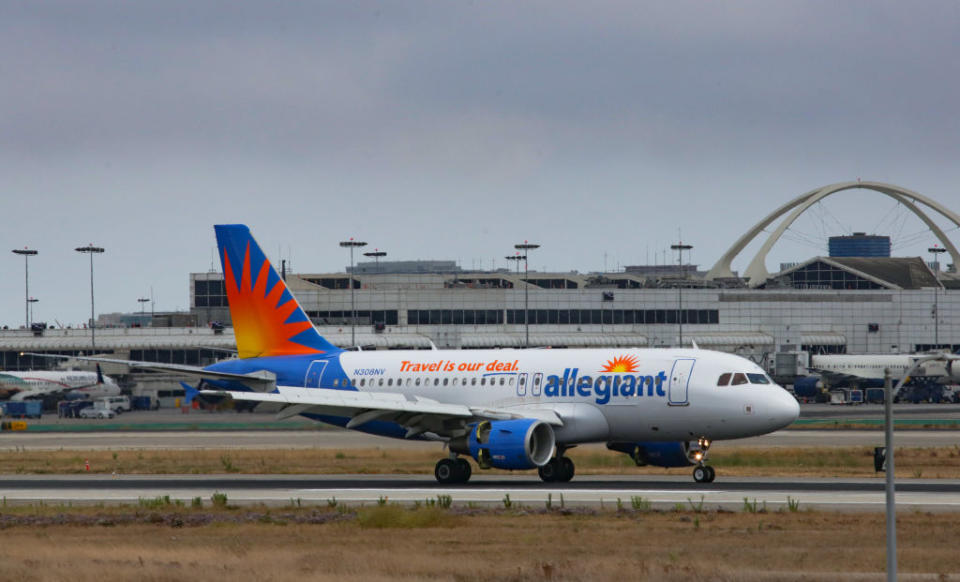How to check the safety record of your aircraft
Low-cost airlines are a great option for budget travelers, but a new report might have you questioning their safety.
On Sunday, “60 Minutes” aired a story exposing the potential dangers of flying on Allegiant Air (ALGT). The Las Vegas-based low-cost carrier flies about 85 aircraft on more than 350 routes around the country, and prides itself on offering some of the lowest fares possible. Its business model has made it the most profitable airline in the U.S., but their aircraft consistently performs at a lower standard.
According to the story, about 30% of the planes flown by Allegiant are McDonnell Douglas MD-80s, an aircraft that is rarely used by other airlines. In fact, American Airlines started to phase out this aircraft in 2016. What’s more, almost all of the MD-80s used by Allegiant were purchased second-hand from foreign airlines and a handful of them have experienced nagging mechanical issues.
The aircraft incidents can be found in Allegiant’s Service Difficulty Report, which provides the Federal Aviation Administration (FAA) with airworthiness data. This report shows the airline’s aircraft encountered 100 mechanical issues between January 2016 and October 2017. The glitches include major threats like mid-air engine failures, aborted takeoffs, smoke in the cabin, hydraulic leaks and rapid descents.
The same report concluded that Allegiant had 60 unscheduled landings and 46 in-flight emergencies during that same time frame.

A day after the “60 Minutes” report, Allegiant’s share prices fell by 5%. The stock rebounded a bit, but closed at $146.40, down 4.65%. In a statement, Captain Eric Gust, vice president of operations, said that Allegiant Air is proud of its “strong safety record, as noted by the most current, comprehensive FAA audit.”
Gust went on to say that the airline’s investment in training and infrastructure would continue to make their “operation stronger.”
How to stay safe
As a consumer, there are a lot of things we can’t control during air travel, but you do have some say on the type of aircraft you select. It’s possible to research the mechanical and incident history of an aircraft; you just have to know where to look.
If you want to know if your aircraft has been involved in an accident (an event where damage was done to the plane), you’ll want to search the National Transportation Safety Board (NTSB) accident database. To do so, you need to know the registration number (N-number) of your potential aircraft.
One way to find the N-number is to visit FlightRadar24 and enter your flight information. The results will show you all the planes that have flown on your selected route in the last week. In addition to seeing the type aircraft you’ll likely fly, you can also find the N-number for aircraft frequently used on that route. From there, you can go to the NTSB database, and see if your potential aircraft has ever been involved in an accident.
It’s hard to know if you’ll end up flying on a specific plane because airlines can change aircraft at the last minute. Still, browsing through the frequently used aircraft can give you an idea of the airline’s maintenance standards.
Older planes are more prone to experiencing mechanical issues, so it can also be helpful to research your aircraft’s age. An easy way to do this is to visit the FAA registry and search your N-number. The results will tell you the aircraft model, engine type and year it was manufactured.
The FAA also has a handy site for those wanting to investigate incidents (like mechanical errors) involving their plane. By visiting the Service Difficulty Reporting site, passengers can see just how many times their aircraft has had to report an incident. All you have to do is enter the N-number and the results will include minor incidents like cracked hardware in the cabin, to major setbacks like emergency landings and mechanical issues.
Brittany is reporter at Yahoo Finance. Follow her on Twitter @bjonescooper.
How to stay safe when traveling to Mexico
The Points Guy: Fliers should question their airline loyalty

